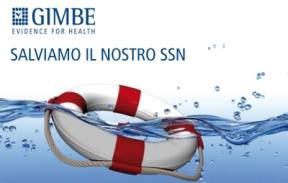All news by diagnostics
Acute exacerbations in children’s interstitial lung disease
Children's interstitial lung diseases (chILD) cover many rare conditions that mainly affect the lung parenchyma, leading to impaired alveolar gas exchange. Acute exacerbations (AEs) are critical events of chronic conditions and suspected to be associated with increased morbidity and mortality. For chILD, there are no studies published systematically assessing the characteristics of AEs.

The first comprehensive study analysing the characteristics and impact on the clinical course of Acute exacerbations (AEs) in children's interstitial lung diseases (chILD) has recently been published. Based on The Kids Lung Register collected data on AEs, clinical course and quality of life of rare paediatric lung diseases, this study includes data of 2822 AEs and 2887 register visits of 719 patients with child.
AEs were defined as major unpredictable deleterious episodes of the pulmonary condition. At least two criteria of the ‘seven criteria’ were necessary to diagnose an AE. The seven criteria were (1) increased respiratory rate, (2) increase or development of dyspnoea, (3) newly developing or increased abnormalities on chest imaging, (4) onset/increase of oxygen demand to attain the individual baseline saturation, (5) need for an additional level of ventilatory support, (6) decrease in pulmonary function in children able to perform the tests and (7) reduced exercise tolerance.
AEs were characterised by increased levels of dyspnoea (74.1%), increased respiratory rate (58.6%) and increased oxygen demand (57.4%). Mostly, infections (94.4%) were suspected causing an AE. Over one-third of the children were admitted to the hospital (36.6%). Most AEs lasted 2–3 weeks (40.3%) or longer (33.3%). If treatment was initiated, most patients received β-lactam antibiotics (53.8%), systemic glucocorticosteroids (25.3%), inhaled bronchodilators (24.2%) or macrolides (19.2%).
AEs between two register visits revealed a decline in predicted FEV1 (median −1.6%, IQR −8.0 to 3.9; p=0.001), predicted FVC (median −1.8%, IQR −7.5 to 3.9; p=0.004), chILD-specific questionnaire (median −1.3%, IQR −3.6 to 4.5; p=0.034) and the physical health summary score (median −3.1%, IQR −15.6 to 4.3; p=0.005) compared with no AEs in between visits. During the median observational period of 2.5 years (IQR 1.2–4.6), 81 patients died. For 49 of these patients (60.5%), mortality was associated with an AE.
In summary the study shows that AEs were mostly triggered by respiratory tract infection
(94.4%) causing increased levels of dyspnoea (74.1%) and an increased respiratory rate (58.6%). The hospitalization rate (36.6%) and the increased oxygen demand (57.4%) were high. In patients who died during the observational period, mortality was associated with an AE in 60.4% of the cases. Following an AE, the pulmonary function did not fully recover
but revealed a decline in predicted FEV1 and FVC, which was more pronounced in children with an impaired baseline PFT.
In conclusion this is the first comprehensive study analysing the characteristics and impact on the clinical course of AEs in child, showing that AEs have a significant and deleterious effect on the clinical course and health-related quality of life in chILD.
Bibliography
Seidl E, Schwerk N, Carlens J, et al. Acute exacerbations in children’s interstitial lung disease. Thorax. Epub ahead of print: 2022 Feb 11;thoraxjnl-2021-217941. doi: 10.1136/thoraxjnl-2021-217941.






